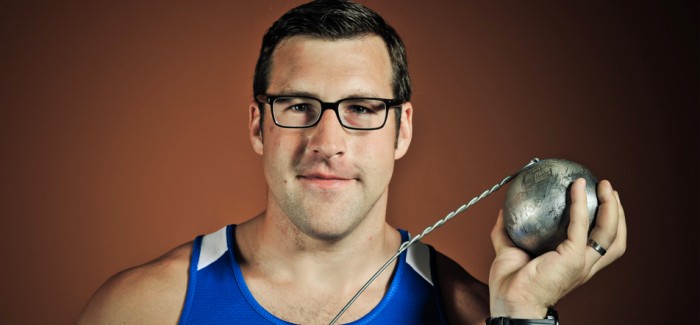Athletech: Martin Bingisser - Thrower, Coach, Lawyer (HMMR Media)
Welcome to Athletech, where we discover the gear and technology the running and track & field community uses to get stuff done. If there is someone who you’d like us to feature, tweet their name to us @DailyRelay with the tag #Athletech.
1) Who are you and what do you do?
I am a hammer thrower, coach, and also work during the day as a lawyer. While I am the Swiss champion in the hammer throw, most people online know me instead for my website, HMMR Media. I have produced a variety of throwing related sites for the past 15 years and this most recent version brings them all together to provide news, training information, and commentary about the throwing events.
2) What hardware do you use?
As you can tell from my involvement online I love technology and try to be among the first movers. However I’ve also been paired with a very old school coach that puts things in perspective. He has never taken a video of me throwing, for example. Many people say he is missing out, but his approach still works. I don’t know how it is in other events, but in the throwing events our technical models still come mostly from the 1980s. Current throwers have much more technology at their disposal, but their technique is not as good. Before I pick up any technology I try to ask if it is just fun, or if it will make me a better thrower and coach.
As a coach this had led me to also apply a big picture approach with my athletes. Rather than focusing on details, we try to work on the basics and video analysis is not always useful for that. When needed I break out my iPhone or iPad to take some video and give them instant feedback to better visualize their problems. But that’s about it.
As an athlete I use video more since I do not have the luxury of expert eyes watching me at every practice. Lately I’ve been using a GoPro Hero 3 since it gives me high quality video, it is easy to carry with, I can mount it on the cage without the need of a tripod, and the remote control features are nice when training alone. It is not perfect, but seems the best fit among many cameras I’ve tried over the years.
3) What software do you use?
Since we are focusing more on technical points like rhythm and balance in video review, I have opted towards more simple video software. There are more complex tools out there, but some of the simple iPhone apps have great functionality and are easy to use on the fly at practice. My favorite now is Ubersense because of its clean interface and the ease of sharing with people who give me long-distance feedback. For example, I can have a coach review the video for me, provide voice over, and mark it up like he is an ESPN commentator. We are experimenting with providing video review like this on HMMR Media and so far the feedback has been great with athletes.
But I have to say that my most software I use is hardly sexy or cutting edge: Microsoft Excel. I’m a numbers guy. I track everything: throws, distance, volumes, biofeedback, etc. Excel lets me do this easily in customizable way. I can compile, graph, and decipher long-term trends and correlations. I could live without cameras or other software in training, but it would be hard to adjust to life without Excel.
4) What would be your dream setup?
My dream set up would be to take remote coaching to the next level by having a coach in another city or country watch and provide live feedback to an athlete. People like Vésteinn Hafsteinsson, who guided Gerd Kanter to discus gold in Beijing, have implemented this already for years, so it is not a pipe dream. Our sport is so spread out that this could be a big advantage by connecting coaches and athletes. Social media and the web have had the largest impact on our sport for similar reasons. They let the widespread but small community connect, motivate each other, and find competitions. In the US, participating has skyrocketed as a result. Internet coaching is starting to grow, but I think it can be dangerous when this is limited to simply sending trainings plans via email. You need first-hand feedback as a coach to bring out the best results. Nothing replaces a coach that is physically present, but this might be a way to help those who cannot find a local coach. It might take the increased participation numbers and turn them into better even results too.
-
martin, can you post a template of your excel doc?
-
I don’t really have a template, all I have is the file I’m actually using which has a lot of personal information and notes in it that I’d rather note share. Maybe I’ll clean it up in the future and post a blank version. But it is nothing too complex. I basically have entries for each data on each day without any special formatting or anything. I then visualize it with a simple scatter chart. I use one worksheet per training period. I will occasionally do additional analysis to look for long-term trends, but I do these individually since I might be looking at different items.
Other coaches I’ve worked with (namely Nick Garcia and Derek Evely) have much more complex templates that do more analysis automatically and this is great when you are working with a bigger group than I have since it saves time. I just haven’t gone through the effort of setting that up myself yet.

















Comments